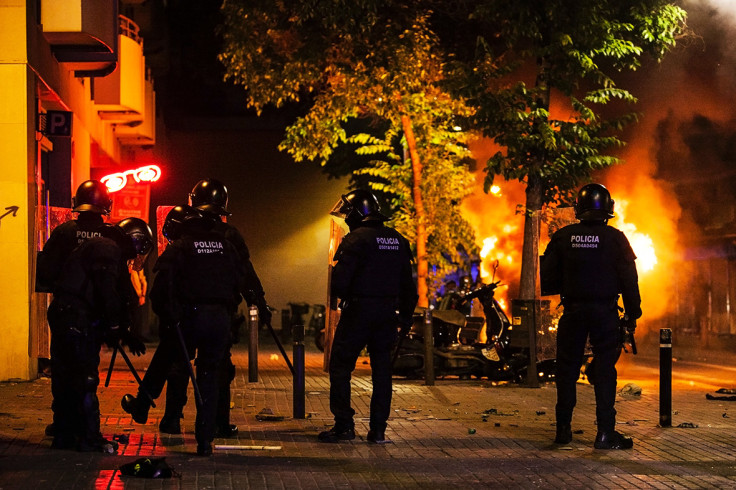Squatters riot in Barcelona streets after being evicted from abandoned bank
Barcelona's Gracia district has been occupied by hundreds of demonstrators for the past two days, after Spanish authorities made the decision to evict people who were squatting inside a former bank on Monday (23 May).
Since the eviction, the riots have continued. On Tuesday (24 May), the demonstrators returned to Plaça de la Revolució and tried to reoccupy the building. They removed the metal sheets that were blocking the doorway and forced their way back inside. Catalan newspaper La Vanguardia described the "cries of jubilation" when they re-entered the bank. Shortly after doing so, however, they were removed by police.

The building, which occupants had called the 'Expropriated Bank', has been used by squatters since 2011 and had been largely ignored by its owners. In 2015, former Barcelona Mayor Xavier Trias, agreed to pay the owners €65,000 (£50,000, $72,000) in rent if the squatters were allowed to stay. The decision was designed to avoid potential disturbances such as the Can Vies building eviction, which led to five days of riots when it was cleared of inhabitants in 2014, having been squatted since 1997 and used as a social and cultural centre.
Authorities have said that the difference between the two evictions is that the Expropriated Bank is a private entity while Can Vies was owned by the Barcelona Public Transport authority.


Ada Colau, a grassroots housing activist before becoming the current mayor of the city, decided not to renew the rental agreement with the owners of the bank, which expired at the end of 2015. Those living there were offered alternative places to live, which they refused. Colau, along with the Spanish government, argued that taxpayers' money should not be used to pay a private owner to buy peace during an election period.








© Copyright IBTimes 2025. All rights reserved.






















